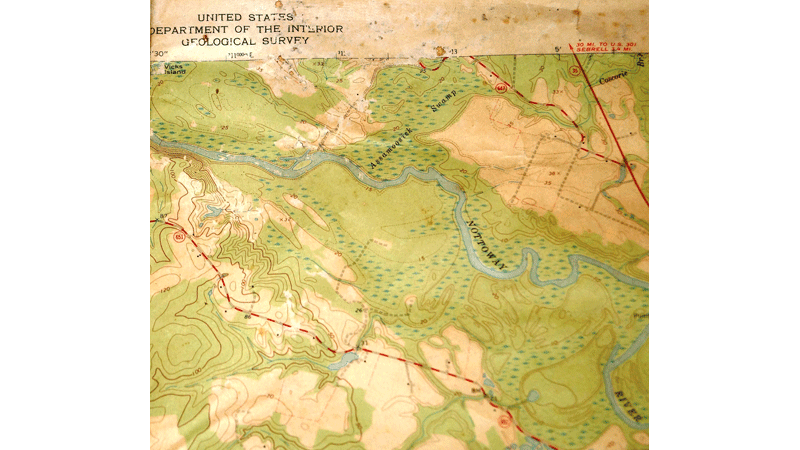The Surry Scarp
Published 10:32 am Saturday, July 29, 2023

- Pictured is a portion of the USGS topographical map that John Bunch consulted as he learned about the Surry Scarp. (Photo submitted by John Bunch)
|
Getting your Trinity Audio player ready...
|
By John Bunch
Virginia Master Naturalist HSS
The Suffolk Scarp is fairly well known in our area, but are you aware that there’s a Surry Scarp as well? To define a scarp, it is a steep slope or abrupt declivity. We generally think of that in our area as being sculpted by water, such as how you see the land/surface water interaction at the cliffs of Chippokes today.
My discovery of learning about the Surry Scarp came from finding an unusual diversity of plants in Southampton County that are only found in areas containing a basic soil pH. Acidic is generally the widespread soil type found in the forests in this county. After pulling out a USGS topographical map that shows the contours of this land, it became easy to see that those dramatically descending contour lines represented a scarp.
Geological research has shown that 4 million years ago and earlier, the sea level reached inland in Virginia to approximately where I-95 runs today. This area is known as the Fall Line and from that toward the east, the Coastal Plain of Virginia stretches out to the Chesapeake Bay and the Atlantic Ocean. At around that 4 million year mark the earth began cooling, causing water to become trapped in ice. The ice sheets in North America that occurred during the Ice Ages are thought to have begun forming about 2 ½ million years ago, and as that ice built up to its maximum, dropped the sea level to the point where it reached to about 400 feet lower than where it stands today. At some point during that sea recession the sea level remained static long enough to carve out the Surry Scarp. As the sea receded farther, it then carved out the Suffolk Scarp along the way.
Those scarps, like what is found at Chippokes today, contain fossilized marine shells. As they erode and break down from the slightly acidic rainwater, calcium and other minerals dissolve out into the groundwater and in time cause the soil and that groundwater to become basic in pH. This enables a different group of plants to grow and survive, which find basic soil conditions more suitable for life. As Southampton County has mostly acidic soil, these plants may tend to be rare or infrequently found on the Coastal Plain. And as it turns out some of those plants that you won’t find in other places just happen to be a number of orchid species.





